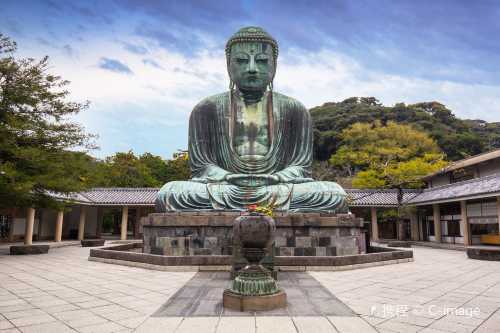Popular Trip Moments
Tsurugaoka Hachimangu Shrine: A Majestic Blend of History, Architecture, and Serenity | Tsurugaoka Hachimangu Shrine: Kamakura’s Majestic Cultural Jewel | 🥗 Comfort Lunch & Local Stroll at Restaurant KIBIYA, Kamakura | 🌿 Calm & Flavorful: Morning at cafe518, Kamakura | 🌿 Warmth & Craft at BREEZEBIRD CAFE & BAKERY, Kamakura | 🌸 Charming Mornings at Cinnamon & more, Hase | 🌅 Morning Bliss by the Sea at The Sunrise Shack, Inamuragasaki | 🌊 Coastal Calm & Italian Flavors at THE TABLE, BIRD HOTEL | 🌧 Cozy Hideaway at Woodberry Coffee Kamakura | Autumn Foliage Tour at the Scenic Temples and Shrines of Kamakura | 🌊 Sea Breeze & Citrus Sips at good morning zaimokuza | 🌿 Hidden Gem in Kamakura’s Hillside: +h cafe kamakura | A Hidden Gem Café in Kamakura – Kitahashi Café ☕🌿 | 🥢 A Special Teppanyaki Lunch with an Ocean View | 🌿 GARDEN HOUSE Kamakura — A Green Oasis in the City | 🍋 Colorful Mornings at EENY Breakfast & Shop, Kamakura | Miffy Oyatsudou @Kamakura 🐰💜 | Solo Zen: Finding Peace in Hokokuji's Bamboo Grove | 🌊 Seaside Lunch at Espresso D Works, Shichirigahama | 🌿 Tree Garden — A Sky-High Hideaway in Kamakura | Yokohama | Japan's Most Underrated City | 🌿 Hasedera Temple Garden: Where Zen Harmony Paints in Endless Green! 🍃 | The Hidden Zen: My Solo Pilgrimage to Jissō-in, Kamakura | 🚋 Kamakura's Scenic Train & Famous Enoden Exits: A Journey Through Time and Sea! 🌊 | 🍤 Kamakura Food Street: A Historic Alley Where Every Bite Tells a Story! 🍳 | If you go to Zushi, you should definitely visit this cafe: "Bread, Espresso and Yuigahama Shoten" 🥖 | Kotoku - in the Great Buddha Daibutsu Temple 🙏🏻 | Shichirigahama Beach 🌊🖤 | Review of a good-value guesthouse in Kamakura | Traveling in Kamakura
Recommended Attractions at Popular Destinations
Popular Attractions in Sydney | Popular Attractions in Dubai | Popular Attractions in Paris | Popular Attractions in Shanghai | Popular Attractions in Phuket | Popular Attractions in New York | Popular Attractions in Tokyo | Popular Attractions in Bali | Popular Attractions in Melbourne | Popular Attractions in West Lake | Popular Attractions in Iguazu National Park(Argentina) | Popular Attractions in London | Popular Attractions in Rome | Popular Attractions in Kuala Lumpur | Popular Attractions in Chefchaouene | Popular Attractions in Singapore | Popular Attractions in Kyoto | Popular Attractions in Los Angeles | Popular Attractions in Zanzibar Island | Popular Attractions in Las Vegas | Popular Attractions in Osaka | Popular Attractions in Walt Disney World Resort | Popular Attractions in Beijing | Popular Attractions in Bangkok | Popular Attractions in Barcelona | Popular Attractions in Chengdu | Popular Attractions in Florence | Popular Attractions in Madrid | Popular Attractions in Jungfrau Region | Popular Attractions in Istanbul
Popular Attractions
The White Dragon Pond of Miyun | Yuhuatai Scenic Area | Qixia Mountain Scenic Area | People's Park | The Bund | Shanghai Botanical Garden | Shanghai Gongqing Forest Park | Jin Mao Tower | Jiming Temple | Meiyuan Xincun Memorial Hall | Shanghai Jade Buddha Temple | Jingan Temple | Shanghai Stadium | Jinjiang Action Park | Lingshan Giant Buddha | Dr. Sun Yat Sen Memorial House in Macau | A-Ma Temple | Qiongtai Academy | Dongzhaigang mangroves | Hainan Tropical Wildlife Park And Botanical Garden | Regional Stadium Main Gate | Arab Serai | MAHAMAYA KALI MANDIR | Santa Maria del Barcarès | Haller Park - Butterfly Pavilion | Plaza de los Pinos | Boca Lake Estates | Katharia Sea Beach | The Wheelhouse at ICON PARK
Popular Restaurants in Kamakura
Hachinoki | Yoridokoro | bills | Kisetsu Ryori Ara Tama | Double Doors Shichirigahama | Qianyuwu (ben) | NUNOKAMI | Sangosho | Kamakura Waku | Acqua Salute | tavernaccia Kamakura | Bastides | Le Marcassin Dor | Gyōza Shuka | Sumibiyaki Tonoyama | Garden House Kamakura | Le Trianon Restaurant | Fuurin | Amandan Blue Kamakura | KARMELIET Ofuna | LAINE | Cafe Vivement Dimanche | Gelateria Il Brigante | Fossetta | Vegetable French Suzu | Sushi Choemon | SHOOBEDOODA | Kamakura Hanten | WASAI YAKURA Komachidoriten | Sabokirara
Popular Ranked Lists
Top 10 Luxury Hotels in Chongqing | Popular Trending Attractions in Xiangyang | Top 20 Premium Hotels in Qinhuangdao | Top 10 Trending Attractions in Dali | Top 10 Trending Attractions in Dubai | Top 20 Premium Hotels in Lishui | Top 10 Trending Attractions in Kunming | Top 10 Premium Hotels in Wanning | Top 10 Trending Attractions in Seoul | Top 20 Premium Hotels in Lanzhou | Top 10 Premium Hotels in Tangshan | Top 20 Premium Hotels in Shijiazhuang | Top 50 Must-Visit Restaurants in Seattle | Top 20 Trending Attractions in Chongqing | Popular Trending Attractions in Hefei | Top 20 Premium Hotels in Hefei | Top 10 Trending Attractions in Shenzhen | Top 20 Premium Hotels in Dalian | Top 50 Trending Attractions in Shanghai | Top 50 Must-Visit Restaurants in Nanjing | Top 10 Luxury Hotels in Guangzhou | Popular Premium Hotels in Longyan | Top 50 Must-Visit Restaurants in Yangzhou | Popular Luxury Hotels in Yangshuo | Top 50 Must-Visit Restaurants in Florence | Top 50 Must-Visit Restaurants in Paris | Top 50 Trending Attractions in Beijing | Top 50 Must-Visit Restaurants in Athens | Top 10 Trending Attractions in Yangzhou | Popular Premium Hotels in Yuxi
About
Payment methods
Our partners
Copyright © 2025 Trip.com Travel Singapore Pte. Ltd. All rights reserved
Site Operator: Trip.com Travel Singapore Pte. Ltd.
Site Operator: Trip.com Travel Singapore Pte. Ltd.

























